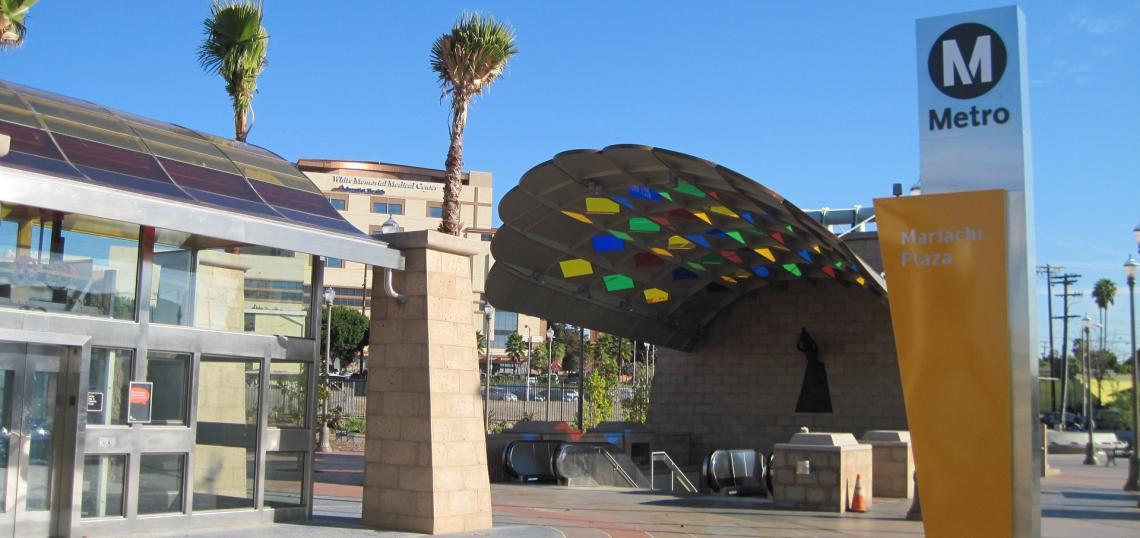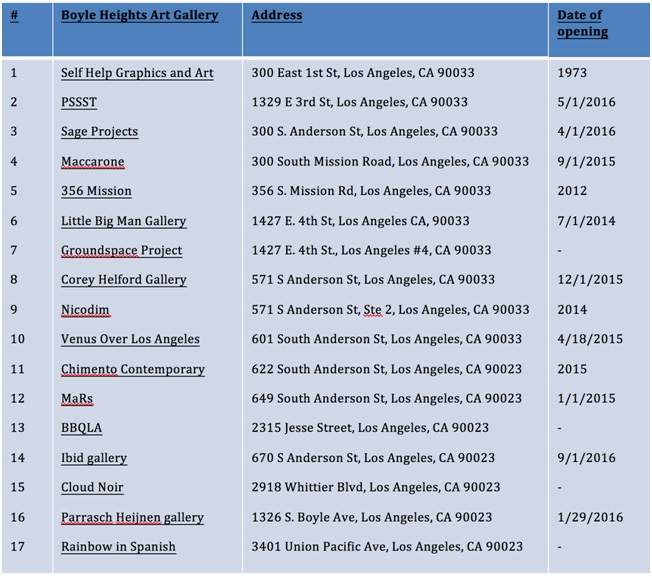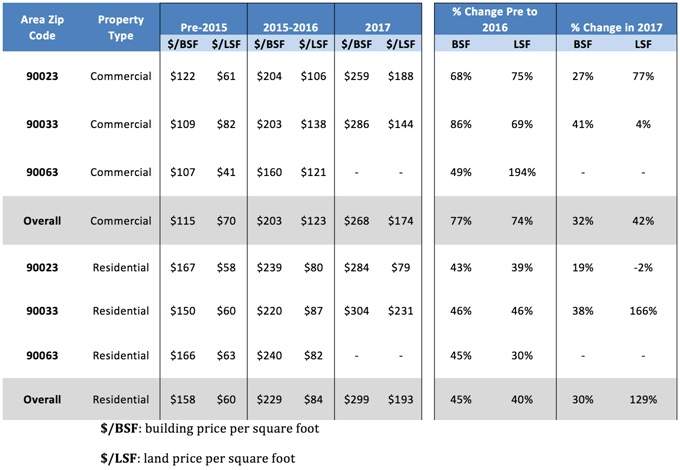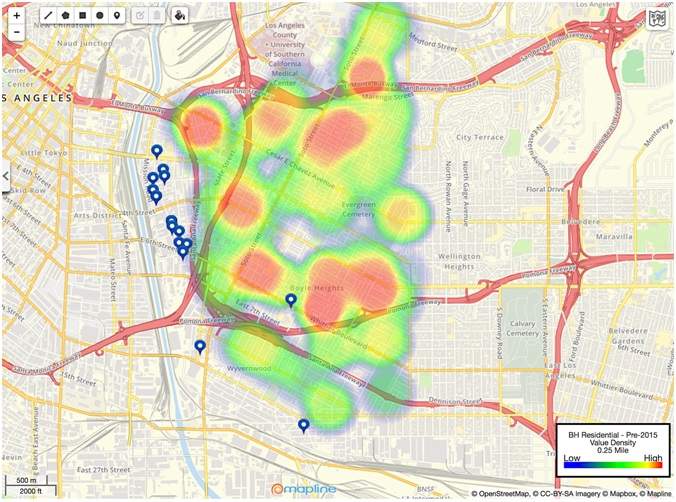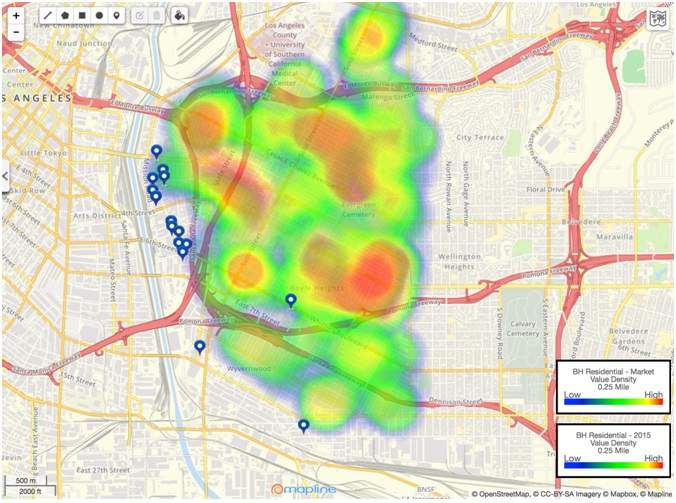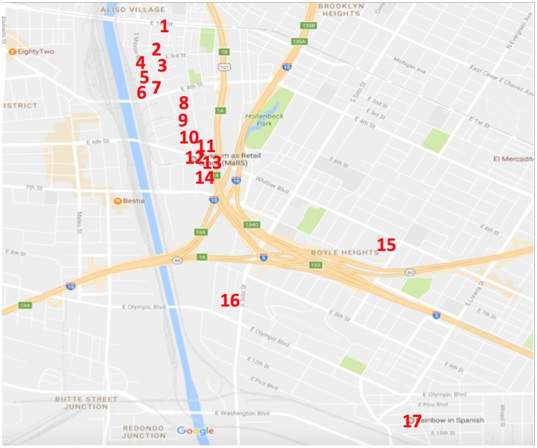
Art galleries are considered by many to be active agents that spur neighborhood change and real estate development. This is certainly a widespread belief in the East Los Angeles neighborhood of Boyle Heights: here, local anti-gentrification activists can be found tagging art galleries, placing mock eviction notices on gallery windows, and trumpeting around signs that read “Keep Beverly Hills out of Boyle Heights”. As the neighborhood undergoes continuous development activity, activist groups such as “Defend Boyle Heights” and “Boyle Heights Alliance Against Art-washing and Displacement” point to one central culprit: the art gallery.
And yet, it is not always so simple. As concrete evidence and data pertaining specifically to this occurrence in Boyle Heights is lacking, the following question must be asked: have art galleries spurred gentrification in Boyle Heights? Based on the performance of the following quantitative analysis, key trends have been identified that link art galleries as the direct cause of gentrification in the Boyle Heights neighborhood.
The first step in this analysis was to classify the percentage change of residential and commercial real estate sale prices per building and land square foot in each of the three Boyle Heights zip codes, obtained using data from MyFirstAm, LoopNet, and Redfin, during three different time periods: pre-2015, 2015-2016, and the current market prices at the start of 2017. These time periods were selected based on the arrival of 17 art galleries that are currently in the Boyle Heights neighborhood, which opened between the 2015 and 2016 years (figures 1 and 2). This data, shown in Figure 3, reflects that property prices per land and building square foot have grown significantly between each of the three time period groups. One could hypothesize that the high percentage of change in pricing has been stimulated by the presence of these galleries.
However, the neighborhood’s price increases for each time period must furthermore be compared to the annual price increases of the greater Los Angeles Metropolitan area as a more concrete method of determining whether or not gentrification is taking place in Boyle Heights. This assessment, as shown in Figure 3 and Figure 4, demonstrates that the residential and commercial sale prices per square foot in the Los Angeles metropolitan area increased only by an average of 5% and 9% respectively for each time period. However, the data recorded for Boyle Heights does not follow the same trend: overall, commercial properties have experienced a growth in sale prices of 77% from pre-2015 to 2015-2016, while residential properties have experienced a 45% increase for that same time period. This growth has continued into the beginning of 2017, with an already recorded change of 32% and 30% for commercial and residential sale prices respectively.
By comparing the percentages of change of the greater Los Angeles Metropolitan area with those pertaining to Boyle Heights, it becomes immediately evident that, for both commercial and residential properties and for each time frame, Boyle Heights has experienced a dramatically superior increase in pricing, which supports the claim that there has been speculation and gentrification in the neighborhood.
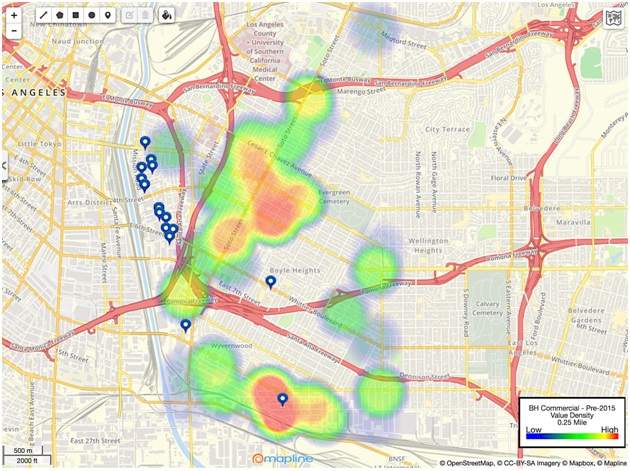
The second step was to geographically locate all property sale data for each time period and give a color-based weight to each sale price depending on the amount, thus producing a heat map. When analyzing the map representing the commercial property sale values prior to 2015 (Figure 5), the areas in Boyle Heights corresponding to the highest values are in no way correlated to the current location of the art galleries, 14 of which are tightly clustered in a former low-income industrial zone along the east side of the Los Angeles River. Considering that the majority of the art galleries were not yet established prior to 2015, it is clear that art galleries did not influence the value of properties in the neighborhood at that time. However, in 2015-2016, once the galleries were established, a new high-value corridor that coincides directly with the cluster of art galleries along the river has appeared (Figure 6). Similar results, while less pronounced, are also found when comparing the residential values of pre-2015 and 2015-2016 (figures 7 and 8).
Through these results, it may clearly be deduced that the art galleries are the driving force behind the increase in pricing of commercial and residential properties in Boyle Heights. This economic change that took place in Boyle Heights therefore corresponds with the phenomenon of arts-led gentrification and validates the claim of activists that art galleries in Boyle Heights are the cause.
As to why the art galleries have caused gentrification in this neighborhood, it could be a number of converging factors. Art galleries may have brought an attractive ‘cool’ factor to this historically older and dilapidated industrial area, causing commercial prices to rise, with residential prices following suit. Moreover, several of the newcomer galleries were already well-established businesses before opening in Boyle Heights, representing more expensive artists and consequently attracting higher-income individuals. This influx of wealthy newcomers is in perfect alignment with the definition of gentrification: more established businesses catering to a wealthier clientele are beginning to settle in an area that was once of little interest but has recently gained new attraction.
Jemina Auge is a senior at the Lycée Francais de Los Angeles. The complete study on the correlation between art galleries and gentrification in Boyle Heights was completed for her AP Research course in 2016. You can contact the author via e-mail at jemina815@gmail.com




